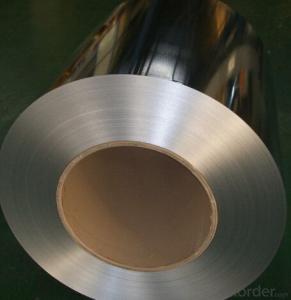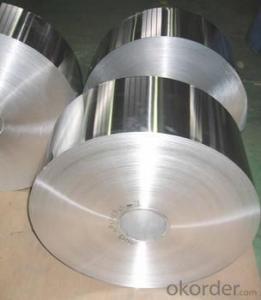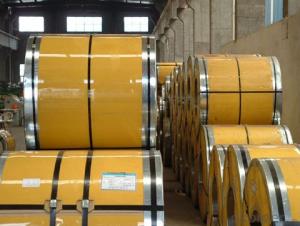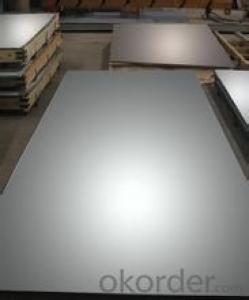Chinese Hot-dip Zinc Coating Steel Building Roof Walls
- Loading Port:
- Tianjin
- Payment Terms:
- TT OR LC
- Min Order Qty:
- 56 m.t.
- Supply Capability:
- 22222 m.t./month
OKorder Service Pledge
OKorder Financial Service
You Might Also Like
1.Structure of Hot-Dip Galvanized Steel Sheet Description:
Hot-dip galvanized steel coils are available with a pure zinc coating through the hot-dip galvanizing process. It offers the economy, strength and formability of steel combined with the corrosion resistance of zinc. The hot-dip process is the process by which steel gets coated in layers of zinc to protect against rust. It is especially useful for countless outdoor and industrial applications. Production of cold formed corrugated sheets and profiles for roofing, cladding, decking, tiles, sandwich walls, rainwater protective systems, air conditioning duct as well as electrical appliances and engineering.
2.Main Features of the Hot-Dip Galvanized Steel Sheet:
• Excellent process capability
• Smooth and flat surface
• Workability, durability
• Excellent anticorrosive property
• High strength
• Good formability
• Good visual effect
3.Hot-Dip Galvanized Steel Sheet Images

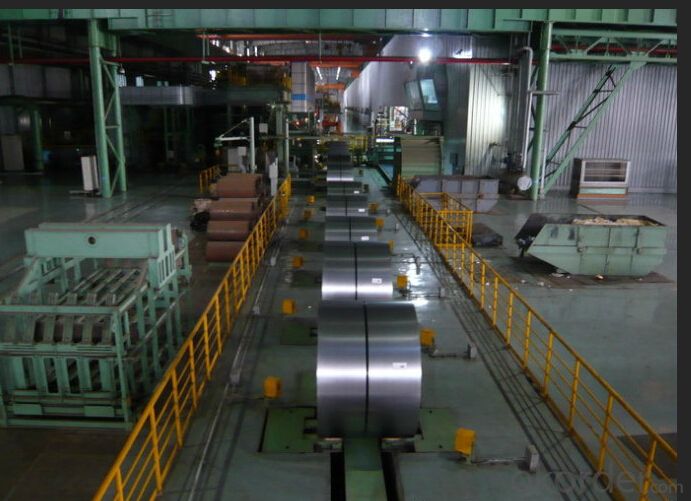
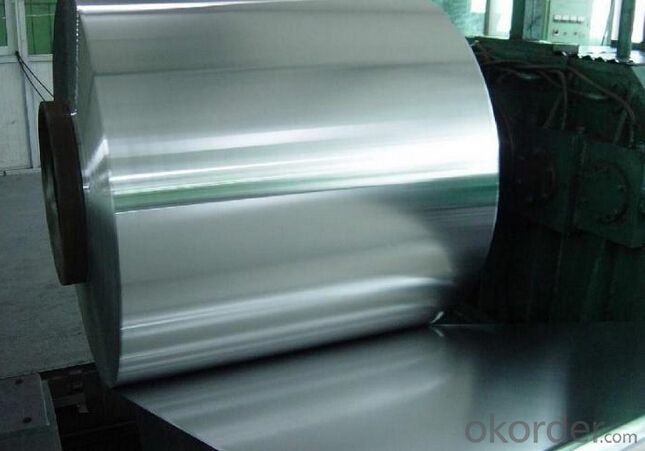
4.Hot-Dip Galvanized Steel Sheet Specification
Standard: ASTM, JIS,EN
Grade: CS, DX51D+Z,SGCC, SS 230~550,S220GD+Z~S550GD+Z, SGC340~SGC570
Thickness: 0.1mm~5mm
Width: max 2000mm
Coil weight:3-12 MT
Coil ID:508/610mm
Surface structure: zero spangle, regular spangle or minimum spangle
Surface treatment: Chromate treatment, Oiled/dry, skinpassed/non-skinpassed
Packing: Standard seaworthy export package
Technology test results:
Processability | Yield strength | Tensile strength | Elongation % | 180°cold-bending |
Common PV | - | 270-500 | - | d=0,intact,no zinc removal |
Mechanical interlocking JY | - | 270-500 | - | d=0,intact,no zinc removal |
Structure JG | >=240 | >=370 | >=18 | d=0,intact,no zinc removal |
Deep drawn SC | - | 270-380 | >=30 | d=0,intact,no zinc removal |
EDDQ SC | - | 270-380 | >=30 | d=0,intact,no zinc removal |
5.FAQ of Hot-Dip Galvanized Steel Sheet
We have organized several common questions for our clients,may help you sincerely:
1.How about your company?
A world class manufacturer & supplier of castings forging in carbon steel and alloy steel,is one of the large-scale professional investment casting production bases in China,consisting of both casting foundry forging and machining factory. Annually more than 8000 tons Precision casting and forging parts are exported to markets in Europe,America and Japan. OEM casting and forging service available according to customer’s requirements.
2.How to guarantee the quality of the products?
We have established the international advanced quality management system,every link from raw material to final product we have strict quality test;We resolutely put an end to unqualified products flowing into the market. At the same time, we will provide necessary follow-up service assurance.
3. How long can we receive the product after purchase?
Usually within thirty working days after receiving buyer’s advance payment or LC. We will arrange the factory manufacturing as soon as possible. The cargo readiness usually takes 15-30 days, but the shipment will depend on the vessel situation.
- Q:What are the different types of corrosion protection for steel strips?
- Steel strips can be protected from corrosion through various methods. Some commonly used techniques are as follows: 1. Galvanization involves applying a layer of zinc to the steel strip. This zinc layer acts as a sacrificial anode, corroding before the steel does. Galvanization provides excellent corrosion protection and is commonly used for outdoor applications. 2. Powder coating entails applying a powdered polymer onto the steel strip, which is then heated and cured to form a protective coating. This method is highly resistant to corrosion, abrasion, and chemicals, making it popular across industries. 3. Corrosion-resistant paint coatings create a barrier between the steel and the surrounding environment, preventing moisture and oxygen from reaching the metal surface. 4. VCI technology vaporizes a corrosion inhibitor and seals it within a package or enclosure containing the steel strips. This inhibitor forms a protective layer on the metal surface, preventing corrosion. 5. Hot-dip aluminizing involves immersing the steel strip in molten aluminum, which forms a protective layer on the steel surface, providing corrosion resistance. 6. Electroplating immerses the steel strip in an electrolyte solution and passes an electric current through it. This results in the deposition of a layer of metal (such as zinc, nickel, or chromium) onto the steel, offering corrosion protection. 7. Organic coatings, such as epoxy or polyurethane paints, can be applied to provide corrosion protection. These coatings exhibit excellent resistance to moisture, chemicals, and UV radiation. Choosing the most suitable corrosion protection method for steel strips requires careful consideration of the specific application and environment. Each method has its own advantages and limitations, and factors such as durability, cost-effectiveness, and maintenance requirements must be evaluated before making a decision.
- Q:Can steel strips be used in the production of wire and cable?
- Yes, steel strips can be used in the production of wire and cable. They are commonly used as a core material to provide strength and stability to the wire or cable, especially in applications where flexibility and durability are required. The steel strips are typically coated or insulated to prevent corrosion and ensure optimum performance.
- Q:What are the common uses of steel strips?
- Steel strips are commonly used in a variety of industries for applications such as construction, automotive manufacturing, electrical appliances, and packaging. They are often used for making structural components, reinforcing materials, electrical transformers, and as raw materials for producing steel pipes, wires, and springs.
- Q:How are steel strips processed for soldering?
- Steel strips are processed for soldering through a series of steps to ensure proper adhesion and a strong bond. Firstly, the steel strips are cleaned thoroughly to remove any dirt, oil, or other contaminants that could interfere with the soldering process. This is usually done by using a degreasing agent or a solvent to ensure a clean surface. Next, the steel strips are typically roughened to create a more suitable surface for soldering. This can be done through various methods such as sanding, brushing, or using a chemical etching agent. The goal is to create small scratches or grooves on the surface, which provides more surface area for the solder to adhere to. After roughening, a flux is applied to the steel strips. The flux serves multiple purposes - it removes any remaining contaminants, prevents oxidation during the soldering process, and promotes the flow of solder. The flux can be in the form of a liquid or a paste and is usually applied using a brush or a dipping process. Once the flux is applied, the steel strips are ready for soldering. A soldering iron or a soldering machine is used to heat the strips and melt the solder. The solder is then applied to the joint or the desired area, where it flows and bonds with the steel strips. The heat from the soldering process should be carefully controlled to prevent overheating or damaging the steel strips. Finally, after soldering, the steel strips may undergo a cleaning process to remove any residual flux or soldering residues. This is typically done using a cleaning agent and can be followed by rinsing with water or using a solvent. The cleaned steel strips are then inspected for quality and can be further processed or used in various applications as required. Overall, the process of preparing steel strips for soldering involves cleaning, roughening, applying flux, soldering, and cleaning again. These steps ensure a clean, well-prepared surface for soldering and result in a strong and reliable bond between the steel strips.
- Q:How are steel strips processed for stamping?
- Steel strips are processed for stamping through a series of steps that involve cutting, blanking, and forming. Initially, the steel strips are unrolled from a coil and fed into a machine that cuts them into precise lengths. This cutting process ensures that each strip is of the desired size and shape for stamping. After cutting, the steel strips are then blanked, which involves removing any excess material around the edges. This is typically accomplished using a die, which is a specialized tool that cuts out the desired shape from the strip. The blanking process ensures that only the necessary material remains, reducing waste and improving efficiency. Once the strips are cut and blanked, they are ready for the stamping process. This involves placing the strip into a stamping press, which uses a die or a series of dies to shape the material. The press applies force to the strip, causing it to deform and take on the desired shape. The stamping process can include bending, drawing, or forming the steel strip, depending on the specific requirements of the final product. In some cases, additional steps may be required after stamping, such as heat treatment or surface finishing, to enhance the properties or appearance of the steel strips. These additional processes can improve the strength, hardness, or corrosion resistance of the material, as well as provide aesthetic enhancements. Overall, the processing of steel strips for stamping involves precision cutting, blanking, and forming, ensuring that the strips are of the correct size and shape for the intended application. This process is crucial in the manufacturing of various products, including automotive parts, appliances, and metal components.
- Q:How do steel strips handle high-pressure applications?
- Steel strips handle high-pressure applications very well due to their strong and durable nature. The high tensile strength of steel allows it to withstand intense pressure without deforming or breaking, making it an ideal material for applications where resistance to pressure is crucial. Additionally, steel strips can be manufactured to precise dimensions, ensuring a tight and secure fit in high-pressure systems.
- Q:Can steel strips be used in the production of solar panels?
- Yes, steel strips can be used in the production of solar panels. They are often used as a structural component to provide support and stability to the panels.
- Q:What are the common heat treatment processes for steel strips?
- The common heat treatment processes for steel strips include annealing, quenching, tempering, and hardening. Annealing is a process of heating the steel strip to a specific temperature and then slowly cooling it down to relieve internal stresses and improve its machinability. This process also enhances the ductility and toughness of the steel, making it easier to form and work with. Quenching involves rapidly cooling the steel strip by immersing it in a quenching medium such as oil or water. This rapid cooling hardens the steel, making it stronger and more wear-resistant. However, quenched steel can be brittle, so further tempering is often required. Tempering is a process that follows quenching and involves reheating the steel strip to a specific temperature and then cooling it at a controlled rate. This process reduces the brittleness caused by quenching and improves the toughness and ductility of the steel. Tempering also helps to relieve internal stresses and increase the steel's resistance to fracturing. Hardening is a process that involves heating the steel strip to a high temperature and then rapidly cooling it, similar to quenching. This process increases the hardness and strength of the steel, making it suitable for applications that require high wear resistance and durability. Each of these heat treatment processes can be adjusted in terms of temperature, cooling rate, and duration to achieve specific desired properties in the steel strip. The choice of heat treatment process depends on the intended application and the desired mechanical and physical properties of the steel.
- Q:How are steel strips coated with tin?
- Steel strips are coated with tin using a process called electroplating. In this process, the steel strips are immersed in an electrolyte solution containing tin salts. A direct current is then applied to the steel strips, causing the tin ions in the solution to be attracted to the steel surface. This forms a thin layer of tin on the steel, providing it with a protective coating.
- Q:Can steel strips be bent or formed into specific shapes?
- Yes, steel strips can be bent or formed into specific shapes through various methods such as cold bending, hot bending, or using specialized machinery like presses and rollers.
1. Manufacturer Overview |
|
|---|---|
| Location | |
| Year Established | |
| Annual Output Value | |
| Main Markets | |
| Company Certifications | |
2. Manufacturer Certificates |
|
|---|---|
| a) Certification Name | |
| Range | |
| Reference | |
| Validity Period | |
3. Manufacturer Capability |
|
|---|---|
| a)Trade Capacity | |
| Nearest Port | |
| Export Percentage | |
| No.of Employees in Trade Department | |
| Language Spoken: | |
| b)Factory Information | |
| Factory Size: | |
| No. of Production Lines | |
| Contract Manufacturing | |
| Product Price Range | |
Send your message to us
Chinese Hot-dip Zinc Coating Steel Building Roof Walls
- Loading Port:
- Tianjin
- Payment Terms:
- TT OR LC
- Min Order Qty:
- 56 m.t.
- Supply Capability:
- 22222 m.t./month
OKorder Service Pledge
OKorder Financial Service
Similar products
New products
Hot products
Hot Searches
Related keywords
